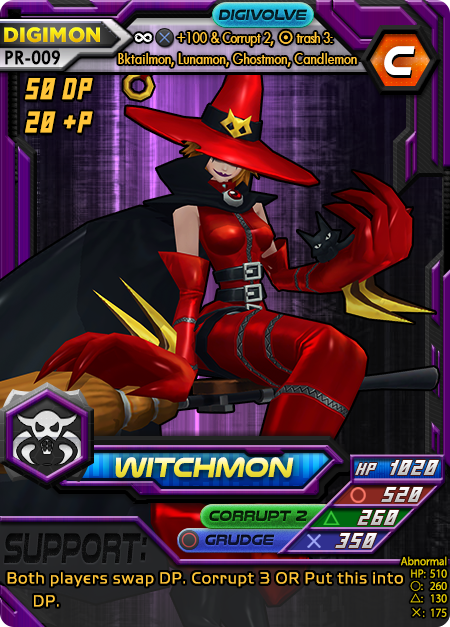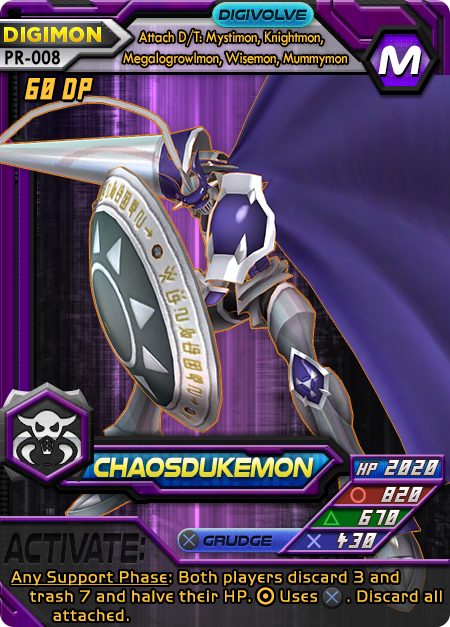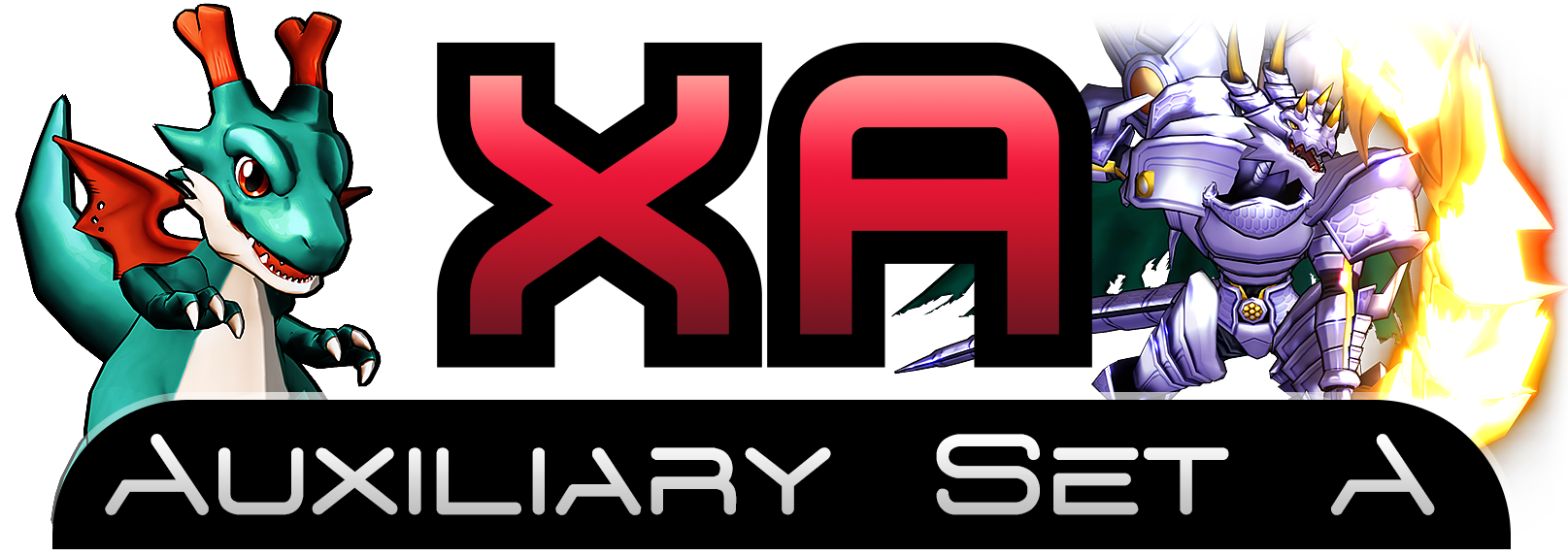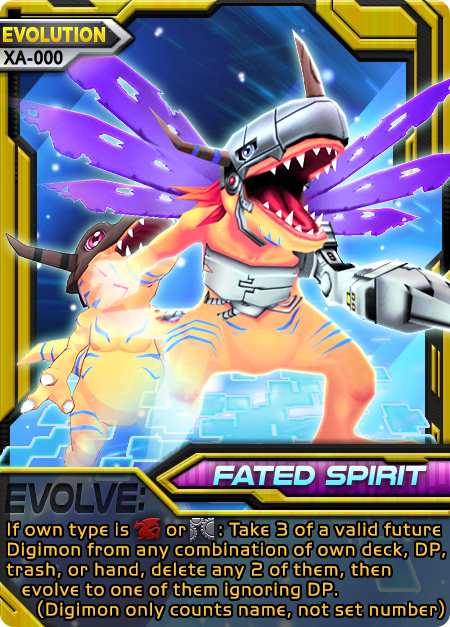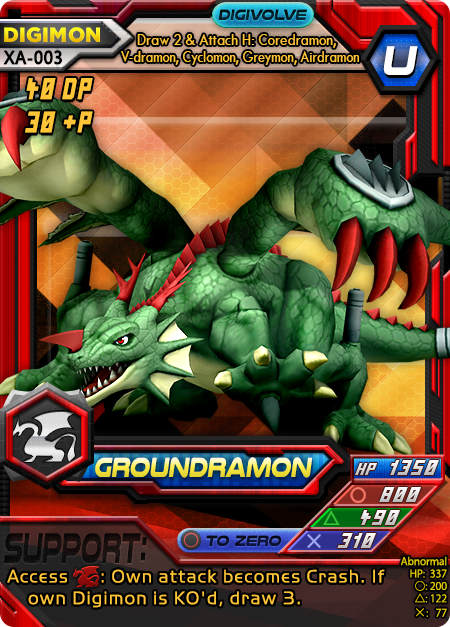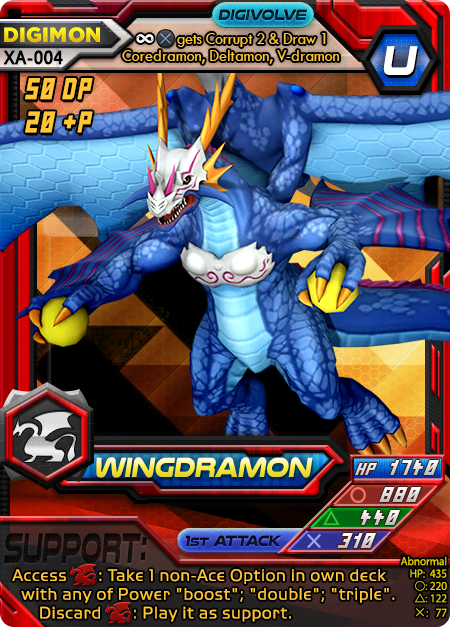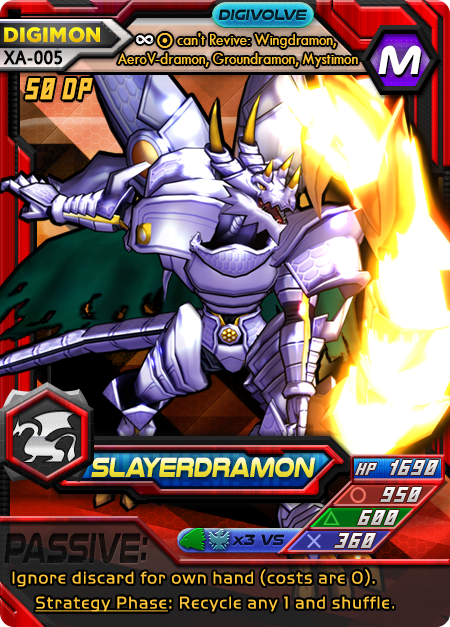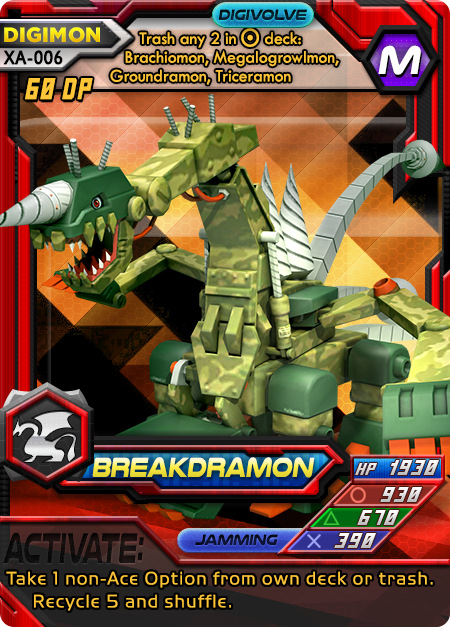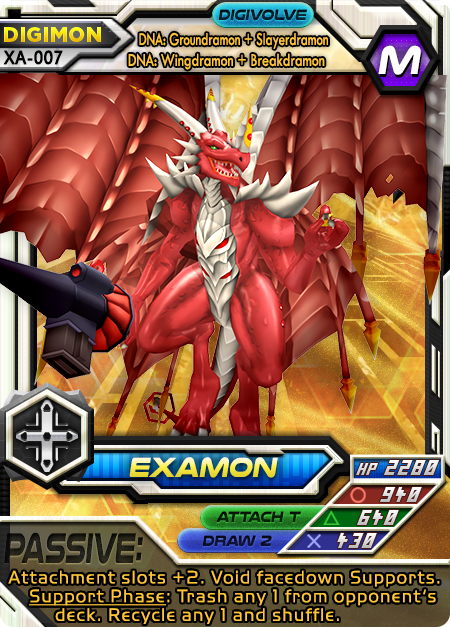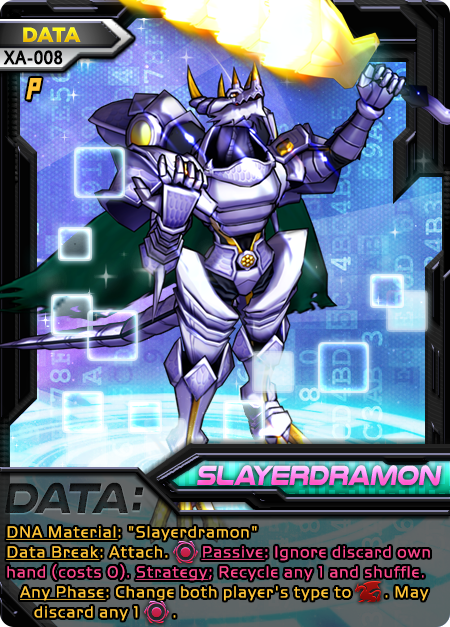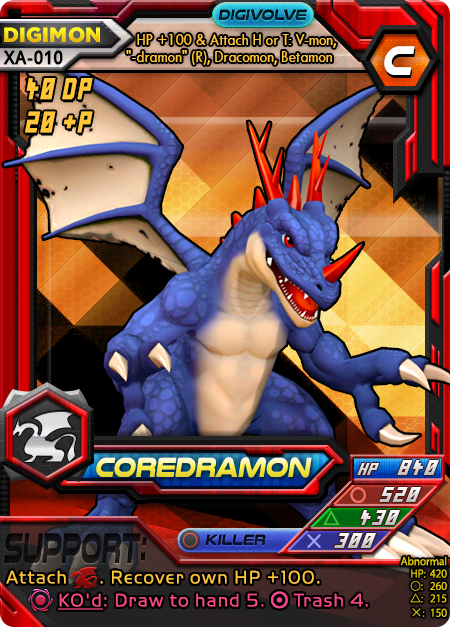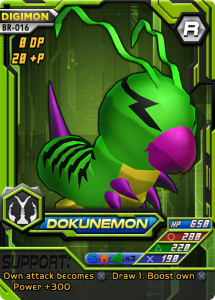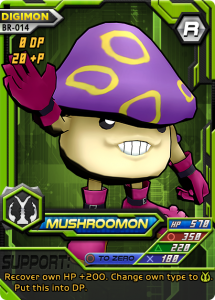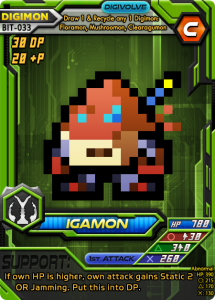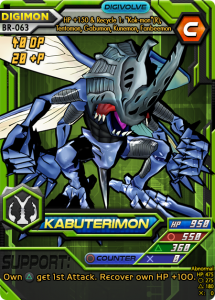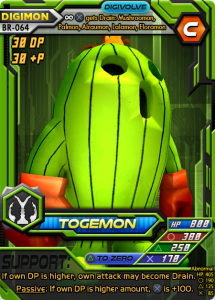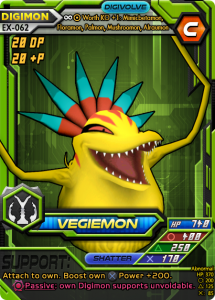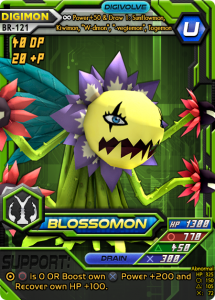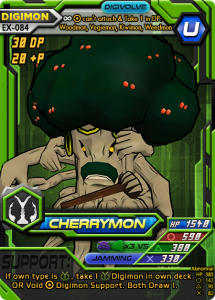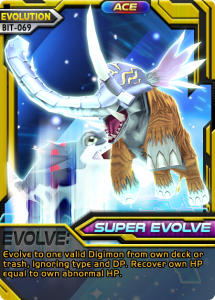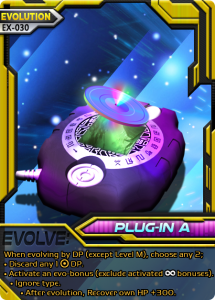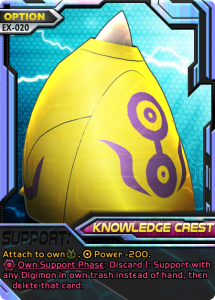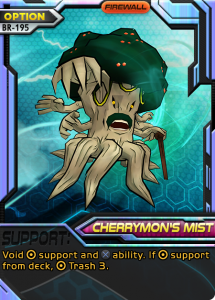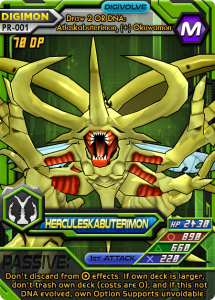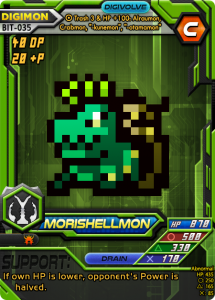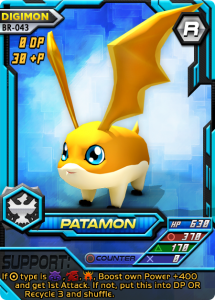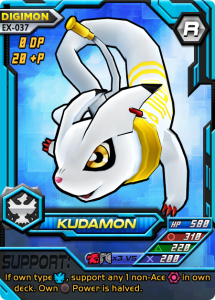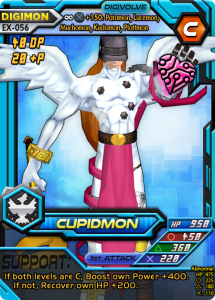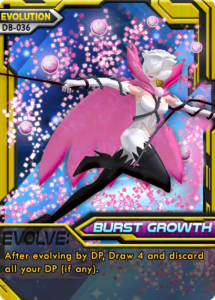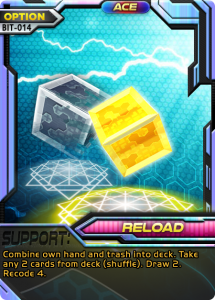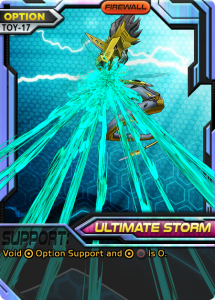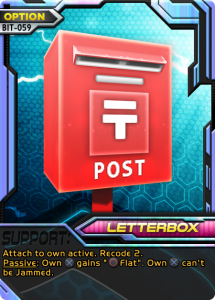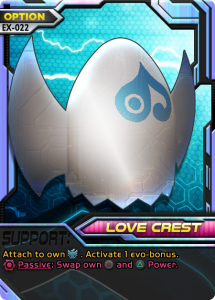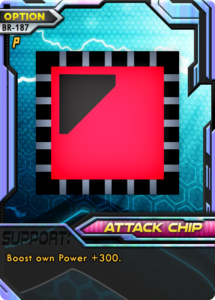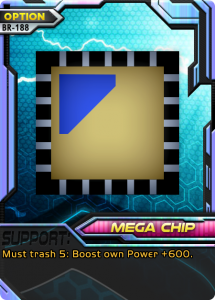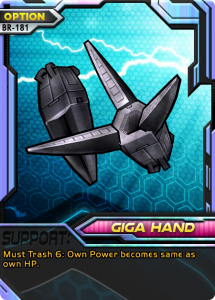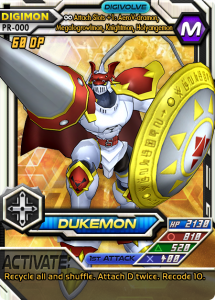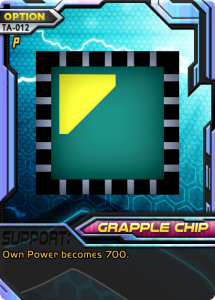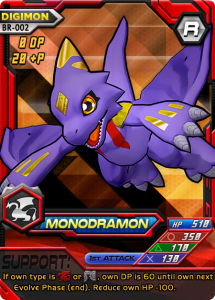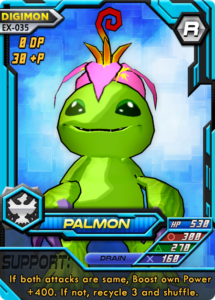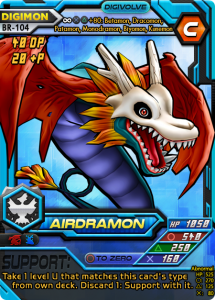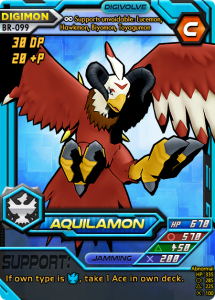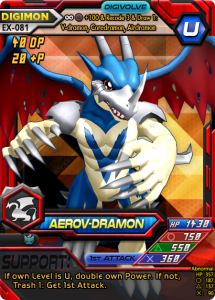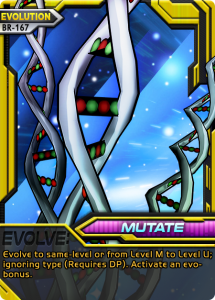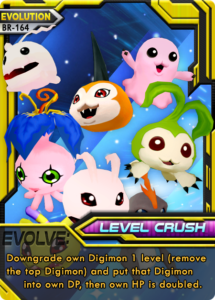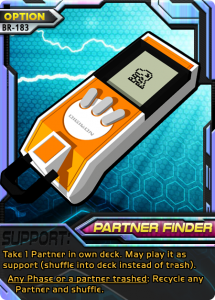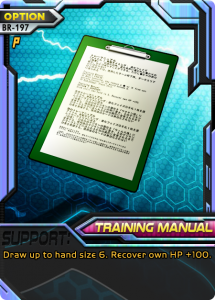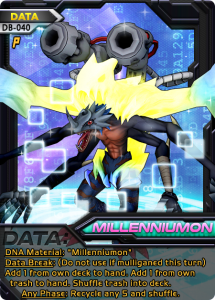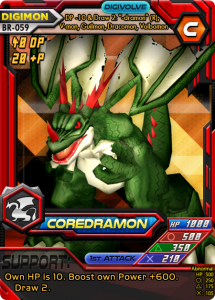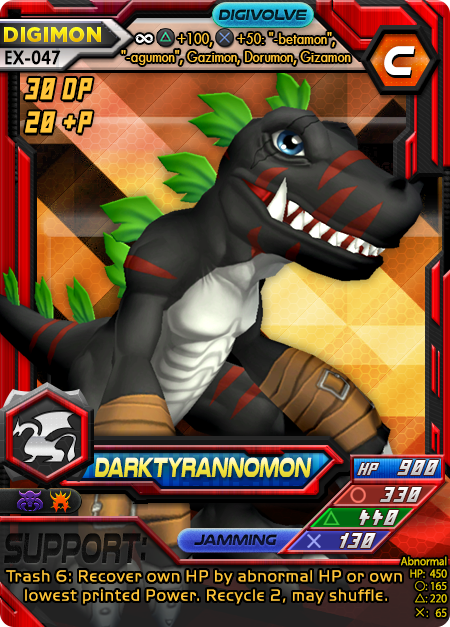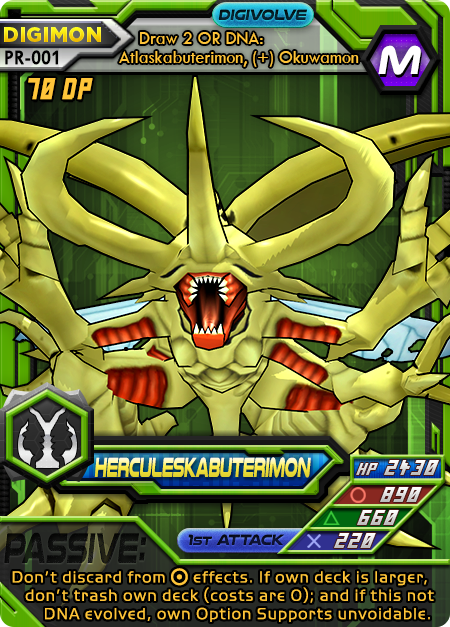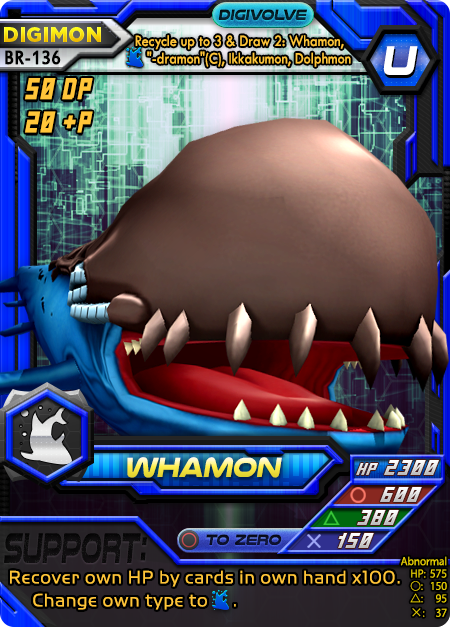Level R: 11
4 Patamon – Primarily fills the +30P quota while giving an extra set of type-hate cards. In this case, as a hate it’s better than Attack Chip and Behemoth combined. However, it will always be useful for recouping deck losses.
2 Penguinmon – Another Rookie primarily used for the +30P, but also doubles as a +20P that gives an evo-bonus. If you rack anything in this deck and play Penguinmon, you should be able to make any non-Ruler evolution. The extra evo-bonuses aren’t incredibly necessary, so save them for Angemon, sometimes Cupidmon, and the rare V-dramon.
4 Lucemon – This is the primary Rookie body of the deck. The +20P will rarely be good enough to do more than assist Evolution cards. However, the type-hate cross is sometimes a safe bet to fall back on, it has an evo-bonus to both Angemon and Cupidmon. The Support ability is like having 4 sources of keeping your superior bodies alive versus Digimon supports, since it voids them. That void is unconditional (save for being Digimon) but beware of the draw 1 to the opponent. If played perfectly, it should void something scary and put the opponent from 2 to 3 cards, which gives them zero advantage on their own next turn.
1 Kudamon Partner – This is our partner. Its innate attachment effect is part of the main purpose of Dukemon (to have two attachments) and works well with the deck.
Level C: 10
4 Angemon – Good HP body, mildly respectable power all-around, and a terrifying Drain attack. When evolving from the majority of the deck’s Rookies, Nightmare and Marine suddenly take a nosedive and eat triple damage plus your Drain! This is devastating if used correctly. The Support is useful to extend your field of type-hate beyond whatever the current active may be able to target. The if not will keep us healthy regardless what the opponent is packing.
4 Cupidmon – Good HP, useful power levels, and respectable early 1st Attack. Its support may boost power like much of the deck—comboing with the power tripling effects, or it may give Crash which is very effective given that this deck has above-average HP. The if not will keep us healthy regardless of the opponent’s level.
1 Kokatorimon – This card provides valuable engine-fuel by itself. As long as you don’t lose the active, it should start adding quality to the deck almost immediately. Unlike most decks with Kokatorimon, this does not entirely rely on him but instead allows the deck to extend its number of useful attachments by one (for Dukemon) and sets up early re-use of key cards for later.
1 V-dramon (PR) – This champion’s immense body for both HP and circle power make it a useful singleton card and it doesn’t disrupt Magnamon. The Crash has the added benefit of taking advantage of the deck’s sizable HP. Its support is often a life saver in any conditions.
Level U: 6
4 HolyAngemon – (Magna in dub, hence “Magna Dux”) This is the primary evolution target and the most effective way to jump to Dukemon. Given its average stats, the best way to make use of HolyAngemon is by adding an attachment (such as Love Crest), gaining the evo-bonus which is nearly guaranteed, and supporting such that his cross is incredibly powerful. This can easily one-shot 98% of the game’s champions and has a faster damage clock than any ultimate without pulling tricks. Given that you should have 3 common type coverages for the type-hate, the only remaining thing to do would be to support with another HolyAngemon for 6 types, or Patamon for 4. Therefore it is crucial that all copies of HolyAngemon are recycled back into the deck either with Reload, Patamon, or Kokatorimon.
2 Magnamon – Often times HolyAngemon isn’t strong enough to carry you to Dukemon. For these cases, Magnamon sports a significantly higher HP and Power body, albeit at a significantly increased cost. Given that you will get a free attachment due to the Ruler restriction the deck was built around, its key that if you want to evolve to Magnamon, try playing cards that trash as a cost first such as Giga Hand, Mega Chip, Mega Disk, or the other Magnamon support. These are also great targets for Kokatorimon recycling due to the Firewall-like void support. Generally if playing against most decks, HolyAngemon will have a strictly more powerful (and harder to stop) attack power. In those cases where he’s not your best bet, make sure to try and play your draw effects and get Magnamon.
Evolution: 5
2 Super Tag – Unlike a Digivice or similar, Super Tag can be used to virtually reduce the cost of a Level M’s DP.
2 Incubator – You or the opponent will likely have an attach so this is used for the DP reduction at Level M while riding the winds of past attach success. Especially useful for getting rid of Magic Word (from either player) so you can immediately get evo-bonuses again. Crucial for finding attaches early. With Magnamon’s attach T evo-bonus, you can also choose from the trash, which gives full coverage for any attach. Reminder: you cannot pick firewalls or aces with Magnamon BUT Incubator can pick Magic Word if you want!
1 Burst Growth – Incredibly useful at recovering losses due to some of the more expensive evolution in this deck.
Option: 14
2 Attack Chip – Very basic and useful card. Combo with x3 VS on Cross attacks, increase the threshold for a 1st Attack KO, and significantly increase Drain’s effectiveness.
1 Mega Chip – The trash cost in this deck might as well be unlimited due to Dukemon’s ACTIVATE and Reload. This becomes an absolutely bananas Power boost and makes numbers large enough with x3 VS that it might kill MoonMillenniummon in one hit under the right circumstances.
1 Mega Disk – Same as Mega Chip for purpose and near-unlimited use, but instead used as a way to keep a key active such as Angemon or HolyAngemon in case it would die.
1 Silver Ball – Nearly staple leveler of playing fields.
1 Behemoth – With the x3 VS in this deck, 1st Attack and +100 Power can be just plain nasty. With Shatter, most of the Circle attacks are high enough that this can completely nullify an opposing attack.
1 Puppet Switch – While the type-change effect isn’t too useful, the +10P combines nicely with the +30P racks in the deck and the recycle + draw allows the immediate reuse of Reload for a potential infinity engine. Play Reload, choose Puppet Switch and any other card, play Puppet Switch on the next support to get Reload, use the racked Puppet Switch somehow to get it into trash, play the Reload putting Puppet Switch into deck, get the Switch again. Reload as much as necessary.
1 Love Crest – Semi-useful evo-bonus effect in some cases, especially if one is missed such as Dukemon. The attack swap ability is incredibly useful in this deck since it makes triangle very powerful when Cross isn’t as devastating.
1 Letterbox – Given how reliant the deck can be on Cross at times, it’s useful to have it unaffected by Jamming. In many cases, this turns your type-hate attacks into attacks that also threaten to Flatten. With that constant threat, letterbox brings a new dimension (no pun intended) to the deck’s ability to add pressure to each attack. Often it will cause your Cross attacks to be able to kill either by flat or HP damage, so the opponent can’t always simply invalidate only one of those.
1 Cherrymon’s Mist FIREWALL – Used specifically for the end-turn of the game to guarantee a sure-KO. Otherwise, it can be selectively recycled by Kokatorimon for later or recycled with Reload.
1 Magic Word FIREWALL – Given the high impact of attachments in this deck, Magic Word is incredibly useful. In fact, it’s almost unfair since most of your attacks during a given game should be Cross, making Magic Word a voiding machine. Be careful since you can’t activate evo-bonuses (even if a card effect would) while it’s attached and that can prevent Angemon/HolyAngemon from being as useful. This can also outright diminish Dukemon’s purpose in the late game.
1 Ultimate Storm FIREWALL – People get very addicted to circle versus this deck. It has virtually no way to punish circle other than flat and deadly attacks will significantly dampen all the Drain. This is best used when you can’t 1st Attack for a KO.
1 Giga Hand – Given the nearly-unlimited trashing in this deck, Giga Hand is nearly a copy of the ACE Ground. This is especially useful in a deck where HP is above average like this.
1 Reload ACE – Given the number of reckless trash costs in the deck, Reload seems like the natural choice. The recycle all feature works much like Dukemon and being able to take any 2 cards after (plus extra) in a deck with multiple single-copy cards means you have a lot of choices for exactly what is most devastating. Here you can see the particulars of why there’s so much type-hate in the deck: choose any type-hate necessary to win or simply pick a Cherrymon’s Mist if it can win the game! With Reload not deleting itself after use, it can then be recycled back into the deck and used over and over, making this a counter to trash-centric decks.
